Ceramics Lesson Plans
Discover a variety of ceramics lesson plans designed for elementary, middle school, and high school students—or browse lessons that work for all grade levels!

Soap Dishes
We begin this lesson after learning to slab and coil build. Students use this knowledge to create their sculptural soap dishes after being introduced to different types of soap dishes and their functionality. Students sketch out their designs and figure out what methods of construction work best to achieve their designs.

Textural Animal Sculptures
This lesson focuses on the development of sculptural and surface treatment skills. Students select an animal of their choice (real or mythical) and develop a sculpture using photograph references. Students build upon previously-introduced hand-building techniques to create their complex forms.
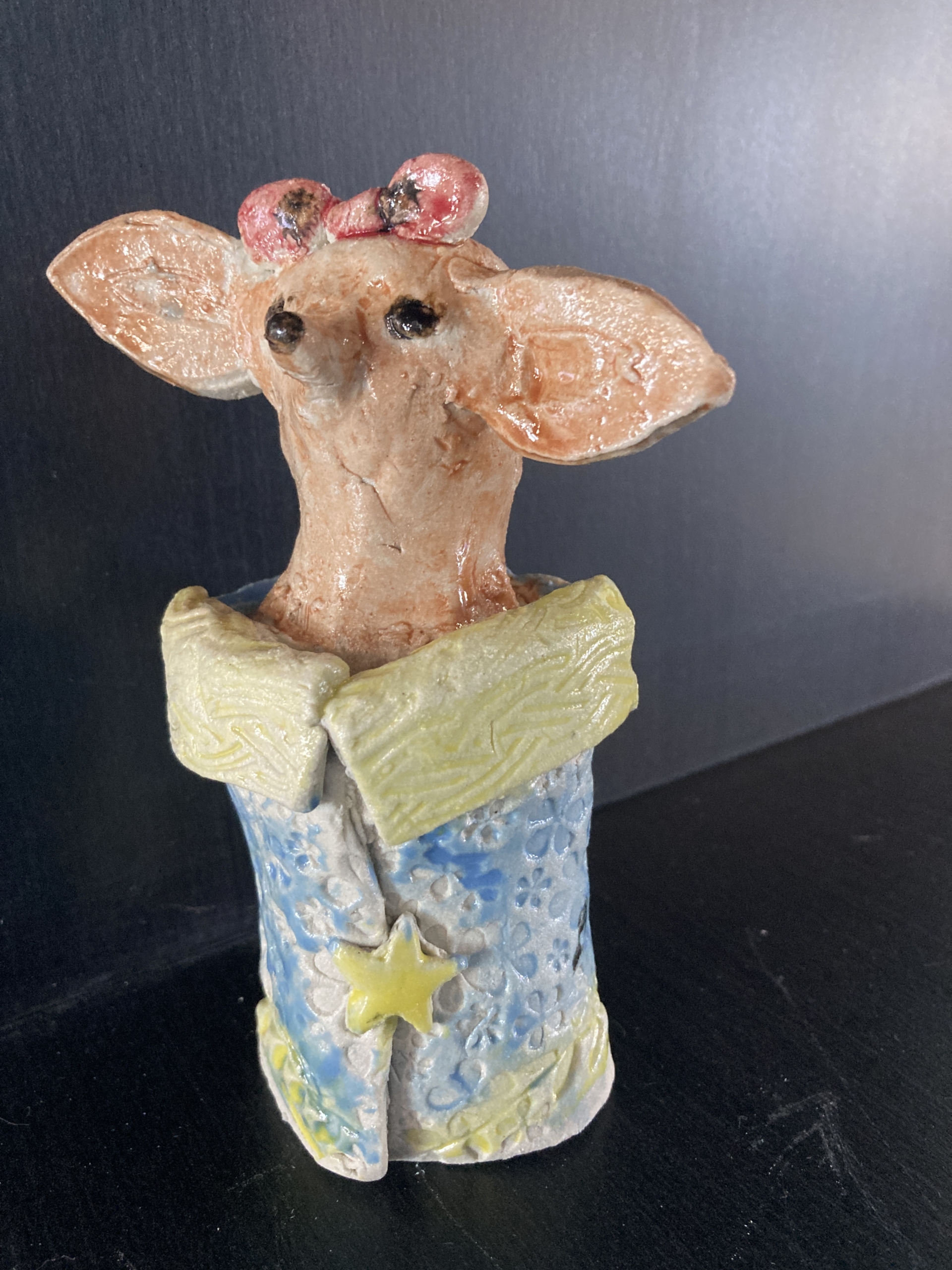
Animal Figures
By using handbuilding techniques to create figurative sculptures, this project emphasizes artistic ideas related to nature, as well as cultural and social/historical contexts. We examine ceremonial dress and study animal physiology.
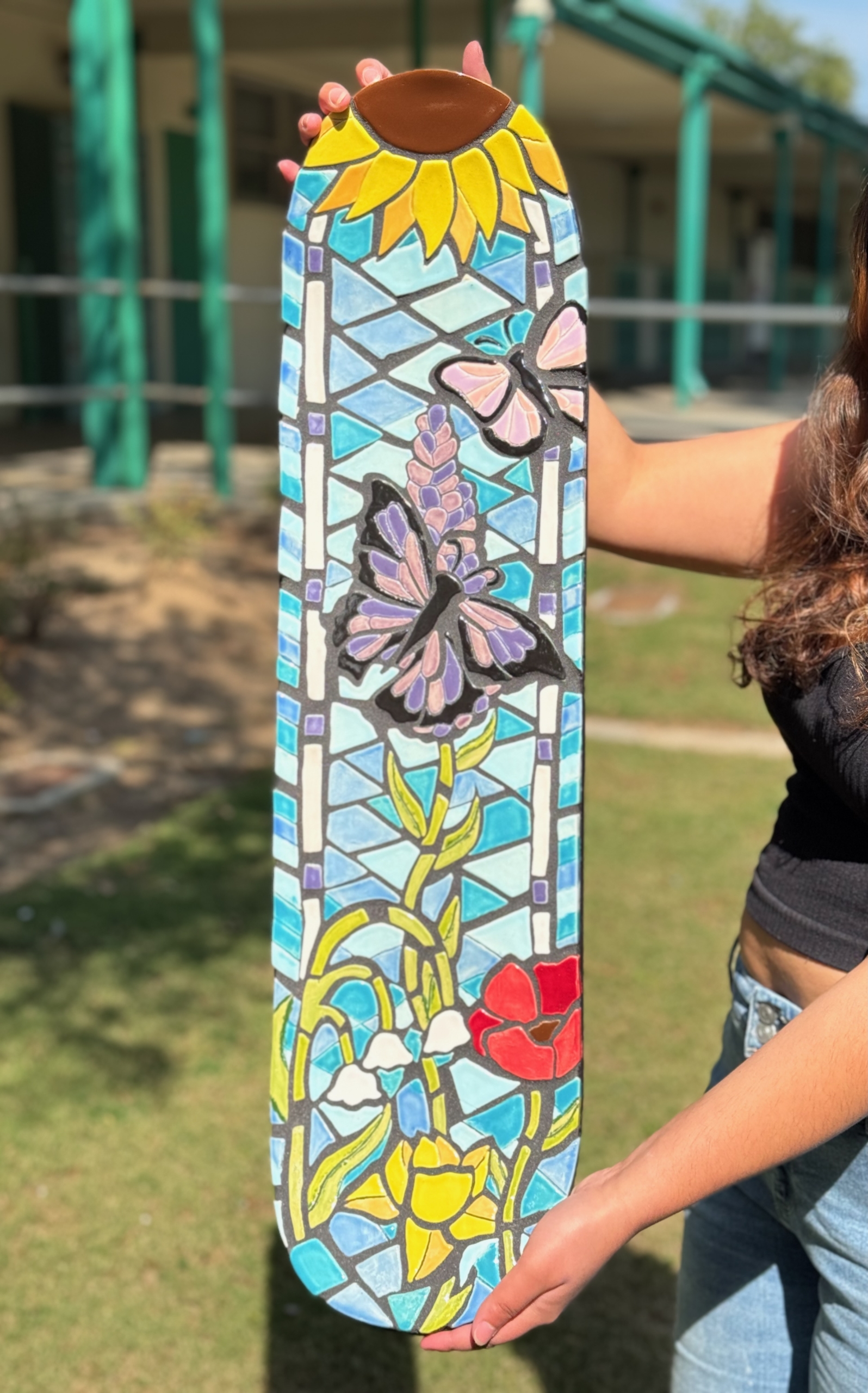
Skating into Mosaics
Students will design and create a custom mosaic tile installation on a wooden blank skateboard deck. Students will work through creative idea generation, working the clay, and final installation using tile adhesive and grout.
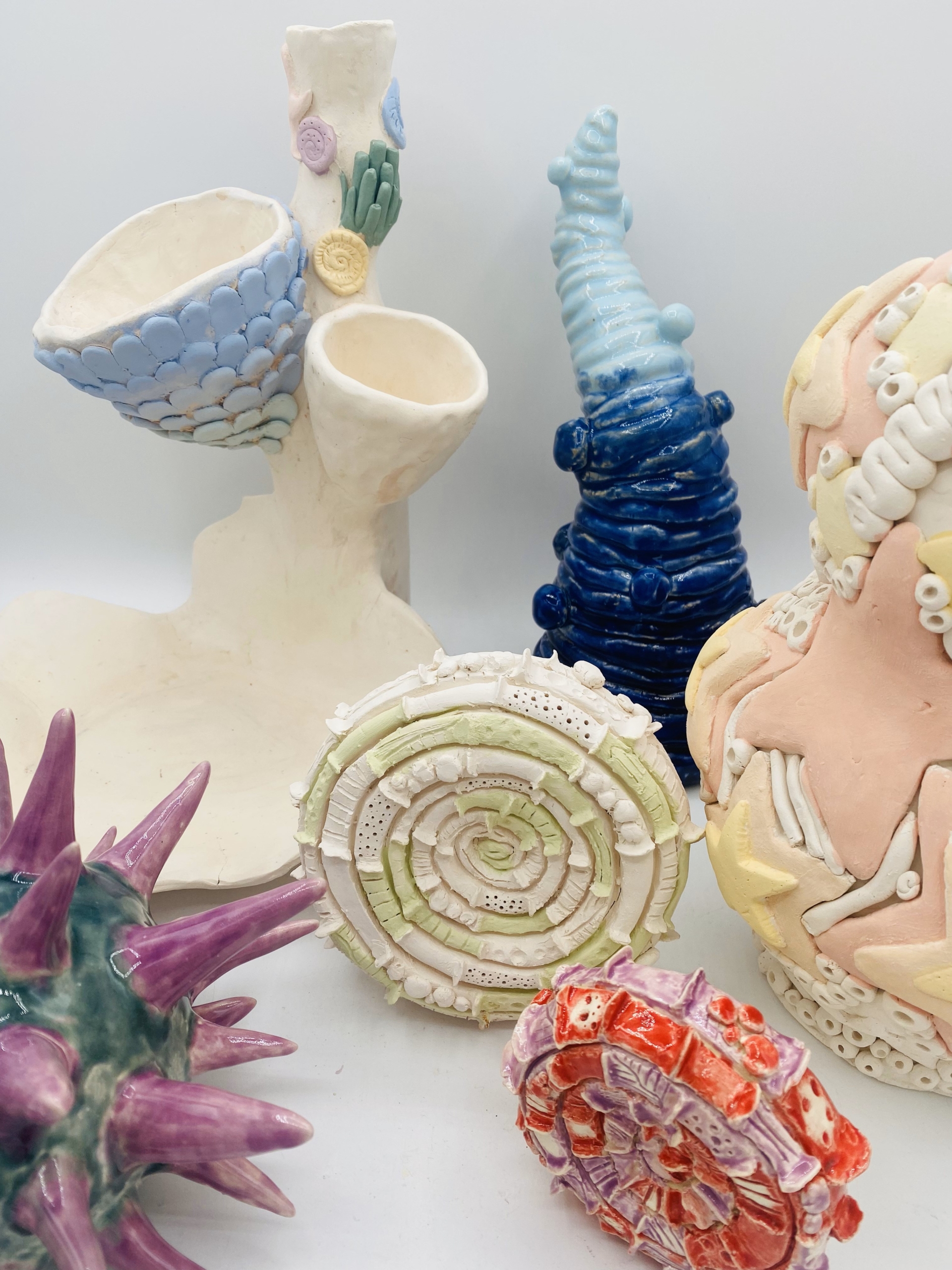
Amorphous Coil Vessels
Students will create an amorphous vessel by researching a microscopic organism from Ernst Haeckel’s Art Forms in Nature and translating its fluid, organic shapes into a 10″-tall coil-built form. This project invites students to blend scientific observation with creative clay construction, forging a deeper connection to natural forms and nature.
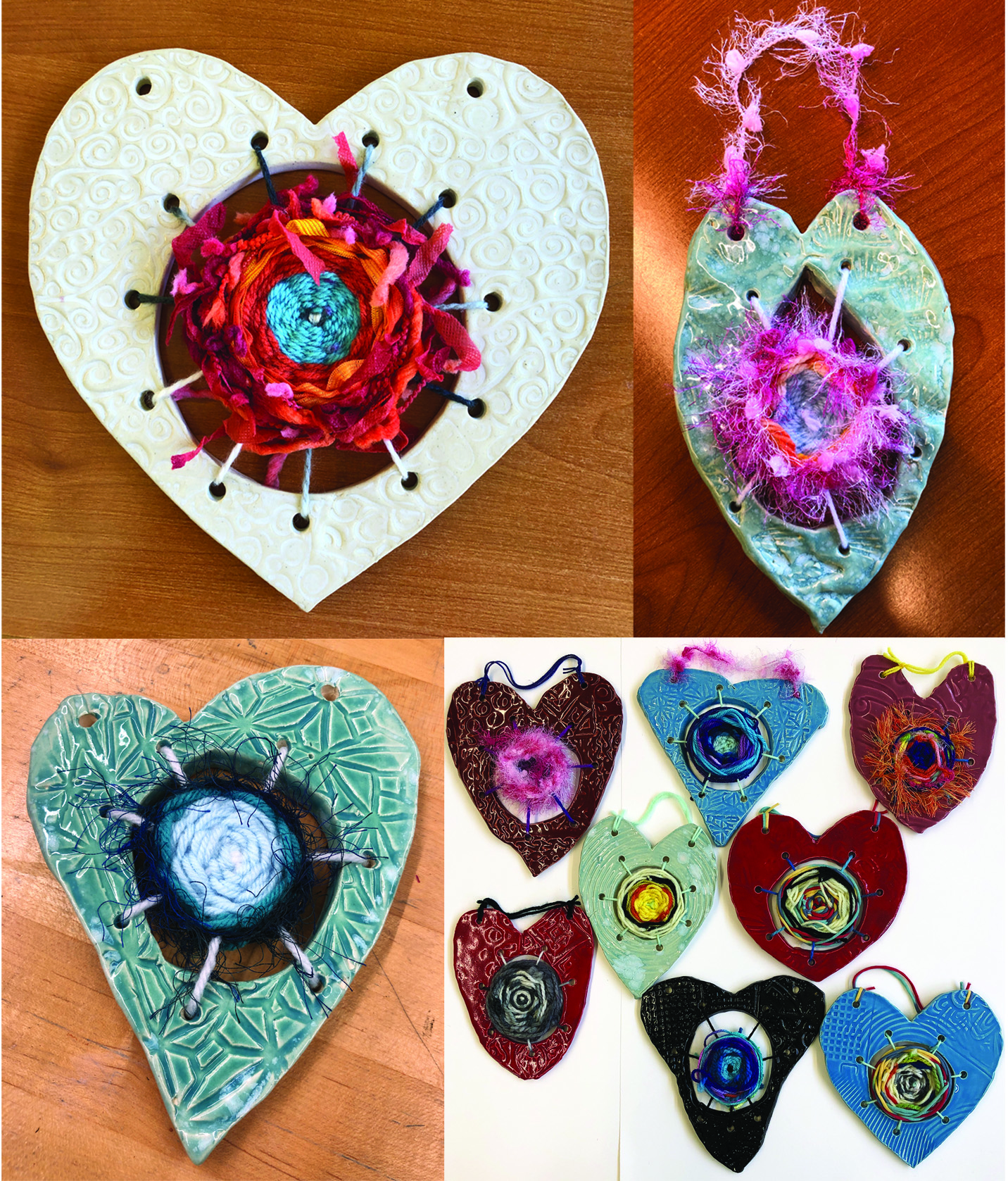
Kindness Woven Hearts
“Woven Hearts” is the main project in a SEL Kindness unit. Young students (2nd grade) learn how to roll slabs, make impressions with mats, cut and trace a heart template, glaze and weave. We discuss the importance of kindness, learn a variety of ways to weave, and create other heart-inspired multi-media artworks.
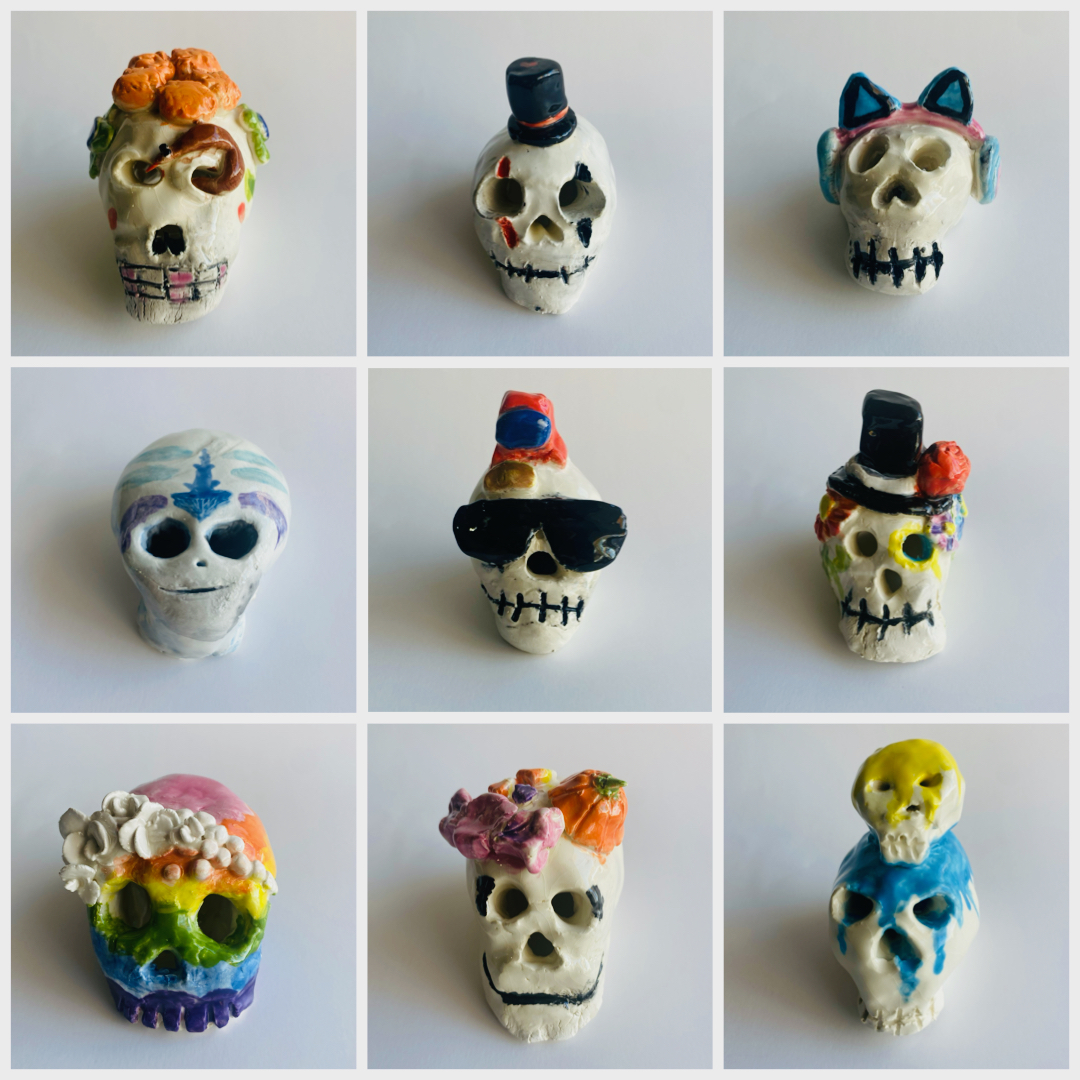
Día de los Muertos Sugar Skulls
During this lesson, students combine functional pottery methods with sculptural ceramic techniques to create a hollow sugar skull embellished with unique expressions of identity. In a secondary lesson, students can then use underglaze to decorate the surface of their skulls with bright colors inspired by traditional Mexican calaveras.

Buzz on Inn!
This project uses slab building as students become architects for solitary bees. Not only does this project have unlimited design aspects and encourage excellent handbuilding, but it is a great ecological lesson as well. Solitary bees do not maintain hives. Giving them a safe place to shelter helps protect the habitats of these early pollinators!
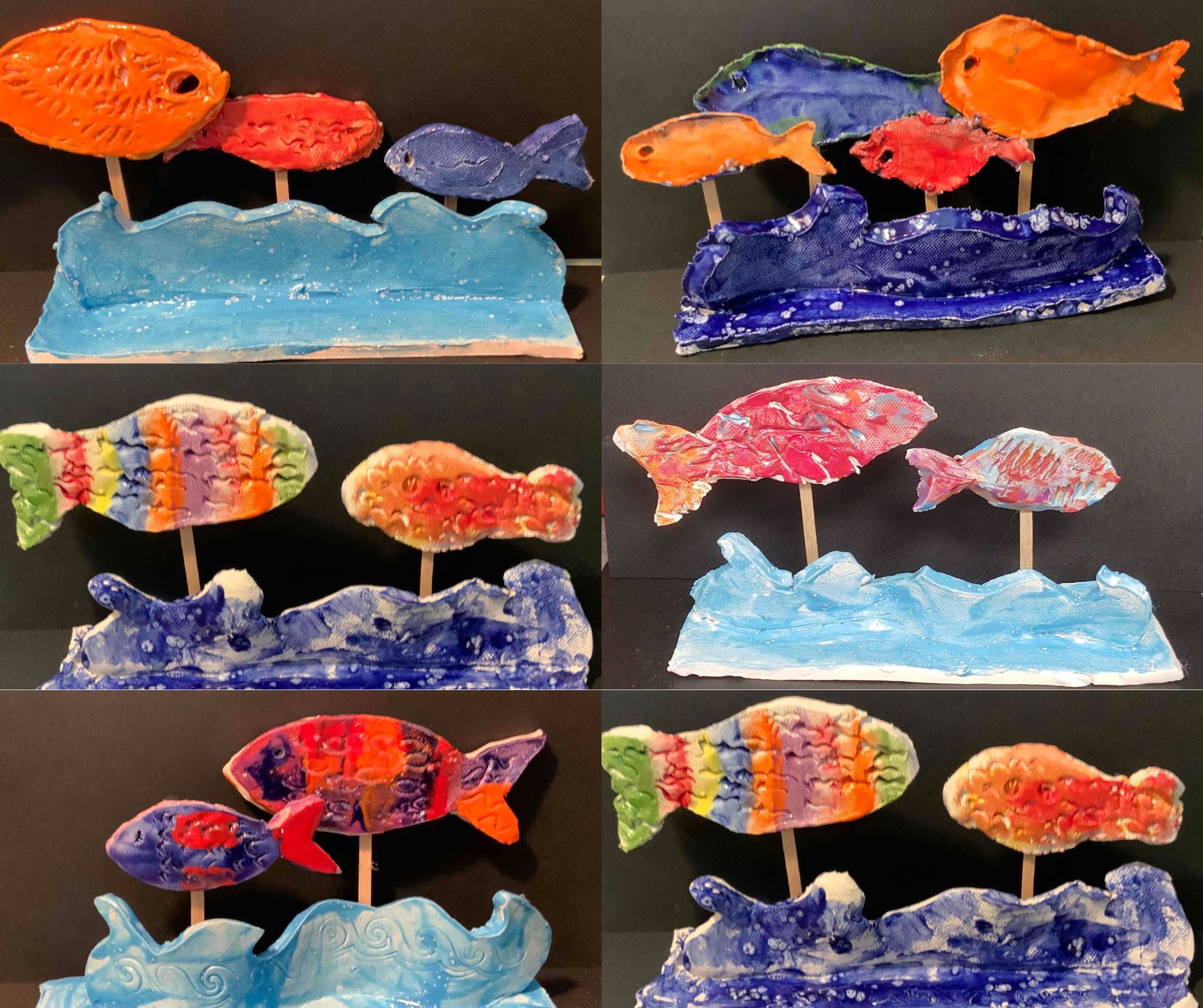
Ceramic Fish Sculptures
Students will explore slab building techniques and texture impressions in clay by creating a wave and fish sculpture.

Altered Toad House
Create a home for toads or other critters in your garden. Shape a bowl on the pottery wheel or hand building (pinch pot, coil, or slump), then carefully cut out an entrance for your amphibian guests, and adding decorative details to personalize your piece. Then vola, you created a homemade home for your critter friends.

What’s Bugging You?
Using double pinch pot and other had building techniques, students will construct a vessel that show what bugs them the most. Use of color and glaze will enhance the creator’s message. Join me for this fun filled adventure.
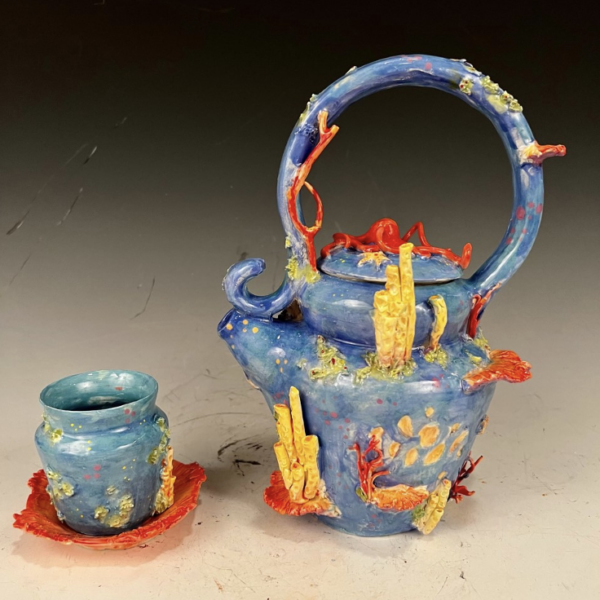
Creative Teapot
This teapot project is designed to challenge students to push their creativity, build or improve upon their ceramic skills, and to enhance their understanding of design, in both form and function. The teapot should be fully functional after glazing.
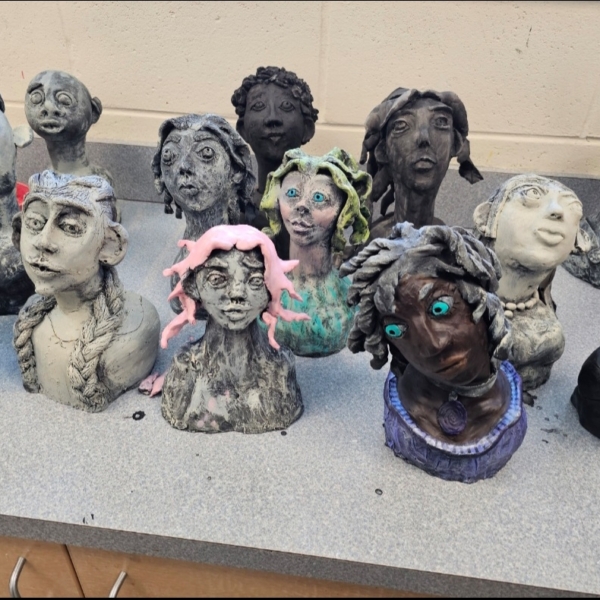
Frozen Faces
Students will create a bust, can be a self-portrait or any face. They will explore the pinch pot method, coil building and slab building all in 1 piece. Textures, will be added to bring character to the busts. Will show the cold finish method with acrylic paint to finish them.
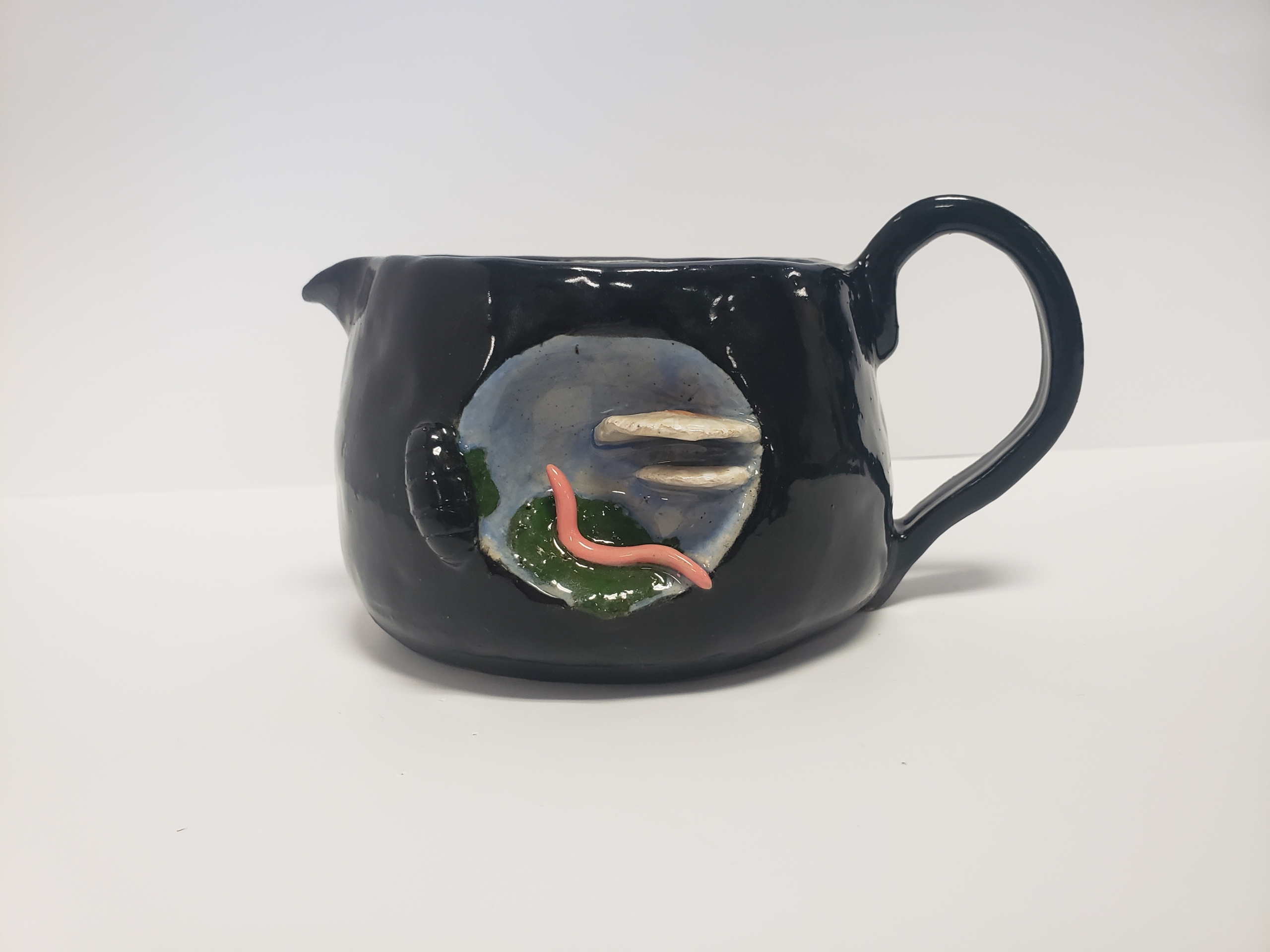
Vessels of Intention
In this lesson, students will create a sculptural or functional form curated for someone important in their life. This form/vessel will be curated towards the interests of the person it is made for. The students will create ceramic forms using their preferred method of working in clay. They can pinch, coil, slab, or even wheel throw their piece.
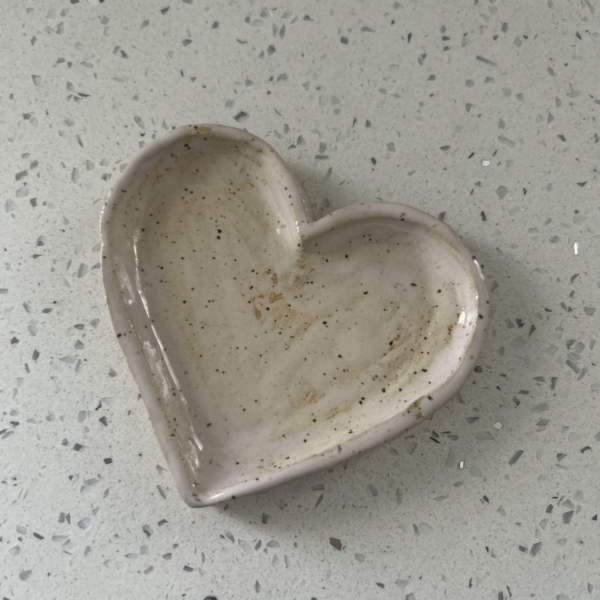
Trinket dish – heart shaped
Explore one of the easy lessons of functional designs with this heart shaped trinket dish!
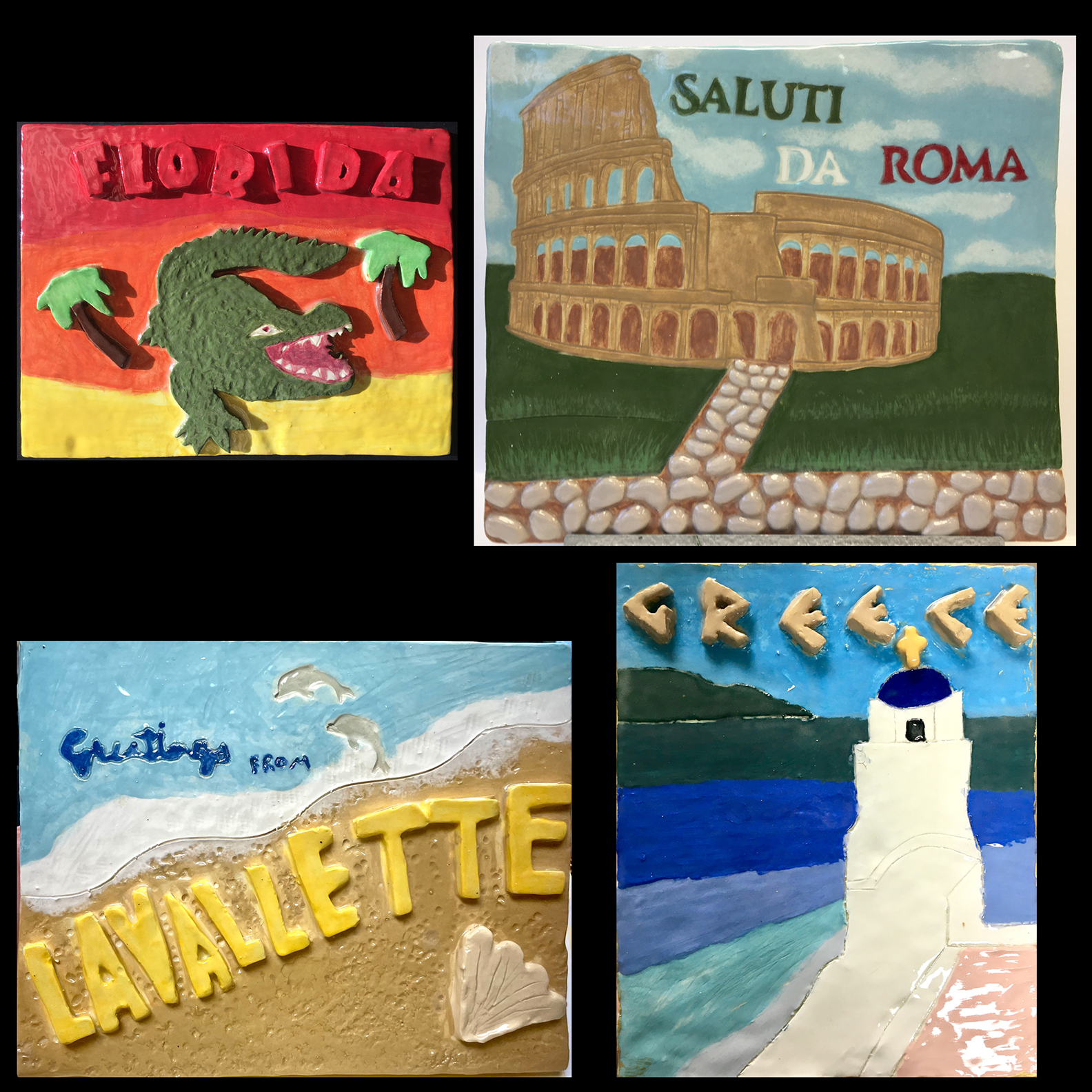
Relief Tile Inspired by Vintage Postcards
The inspiration for this assignment is vintage postcards from the 1900s through the 1960s. In this project, students will create a relief sculpture using a flat slab of clay as a background with additional flat layers of text and imagery, added textures, and carving. Color may be added with underglaze and/or glazes.
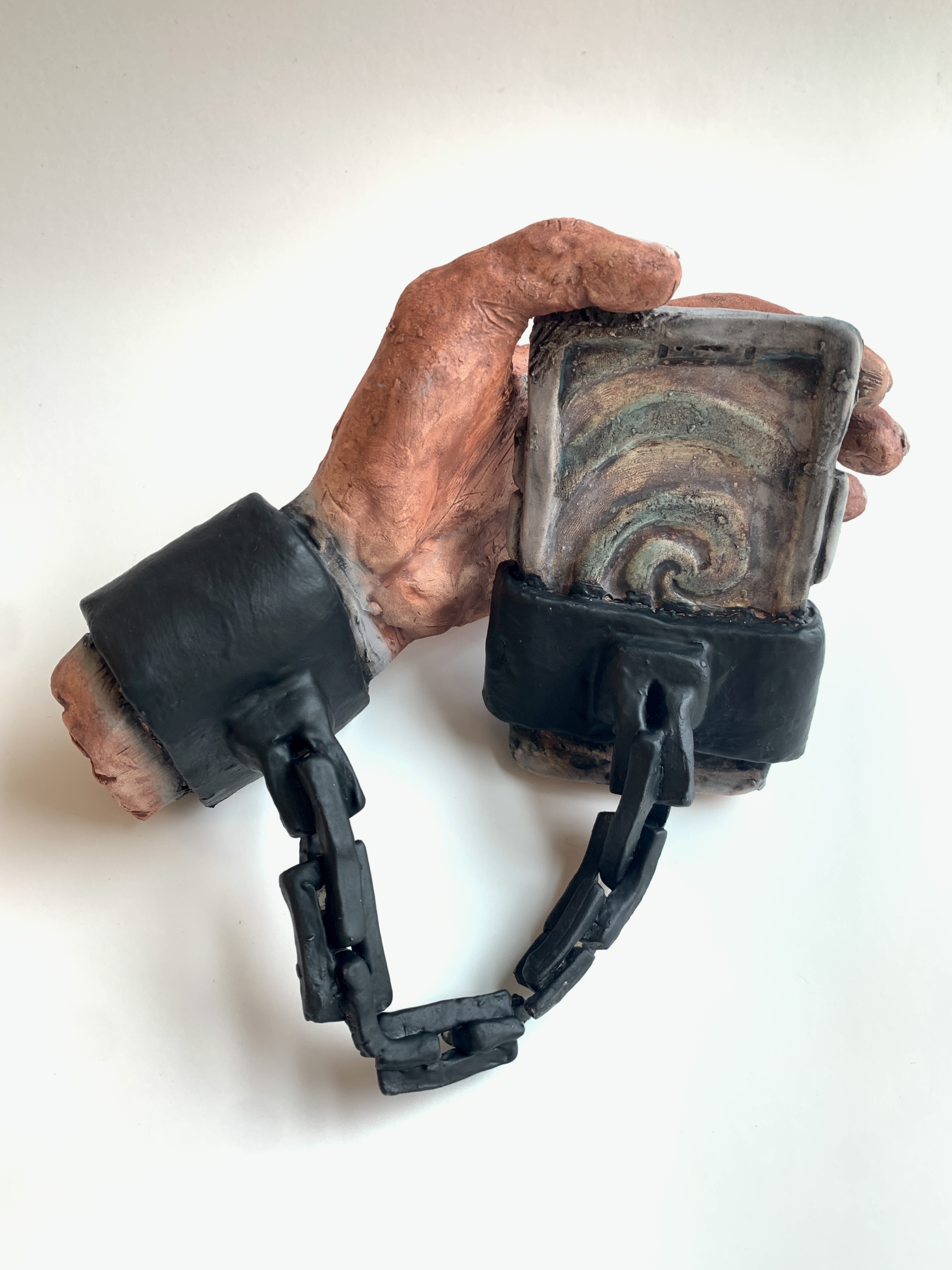
Clay for Change
In the ” Clay for Change” project, students create works of art in clay that take a stance on an issue that is important to them or to the community they live in.
Students may choose a topic that is social, political, environmental, etc. This lesson is best suited towards high school, but could be tailored to work with middle school ages, too.

Mandala Inspired Radial Push Plate
Students learn about sand mandalas and other forms of radial design. Then create their own radial designs using symbols they develop to express themselves (hobbies, culture, family). Students learn about slab construction through building a push-plate with interesting feet.

Themed Clay Boxes
The students have to create a functional box that has a theme throughout. The theme can be simple like nature or more complex. This lesson teaches students how to build with slabs, attaching objects, possible small sculpting, carving/decoration, lid function, and glaze application (or paint if the student chooses).

Ancient Greek to Contemporary Coil Vessels
This project introduces students to Greek pottery and examines how contemporary artists continue to explore these concepts. Students will learn the pinch pot and coil techniques. They will create a life drawing of themselves in a pose that reflects their personality, which they will then incorporate into their vessel using the sgraffito technique.
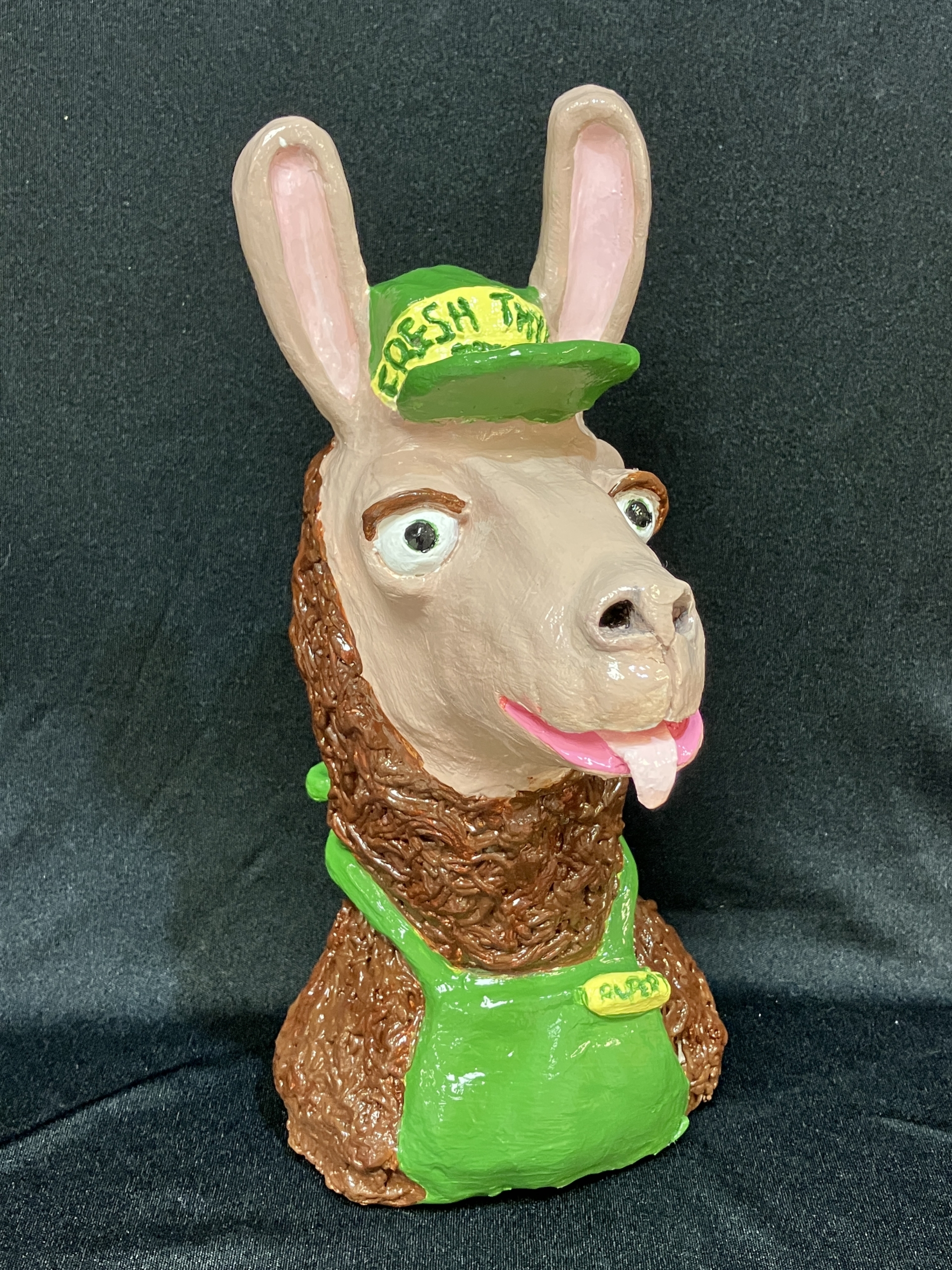
Animorphic Busts
Students will learn how to form a base over an armature to create a bust of a human/animal and practice good structural technique.
Students will combine the features of an animal with that of a human to create an animorphic bust.

Ceramic Monsters
Students will design their own monster in clay. They will learn how to create a pinch pot, coil, and correctly attach items. Through a written reflection they will give their monster a name, birthday, and favorite food as well as explaining what was successful.

Celebratory Clay Rattles
Students create a clay rattle with clay beads. They choose an object for their rattle to resemble, something that is meaningful and worth celebrating. The finished rattle is then painted with acrylic paint.
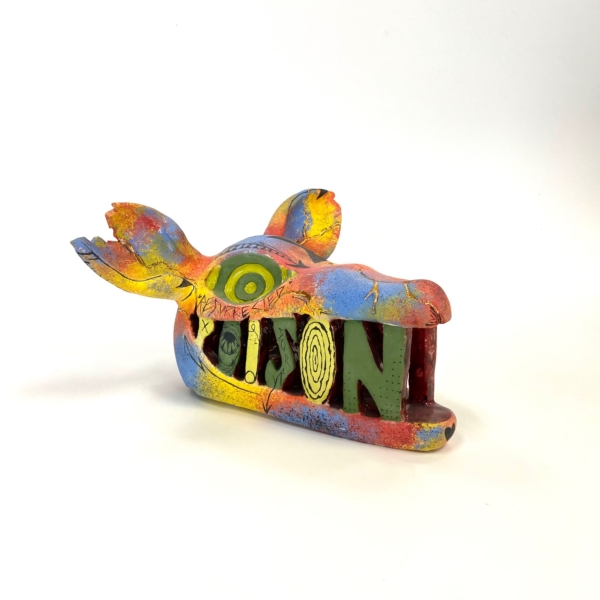
Surreal Ceramics: This Inspired THAT!
Students choose a surreal image from a collection I curate and write a narrative about the piece. They can tackle this as if it’s a critique of the surreal artwork or go totally down the path of making up a story about the artwork. Students then decide if they want to make a sculptural or functional piece inspired by the image and narrative.
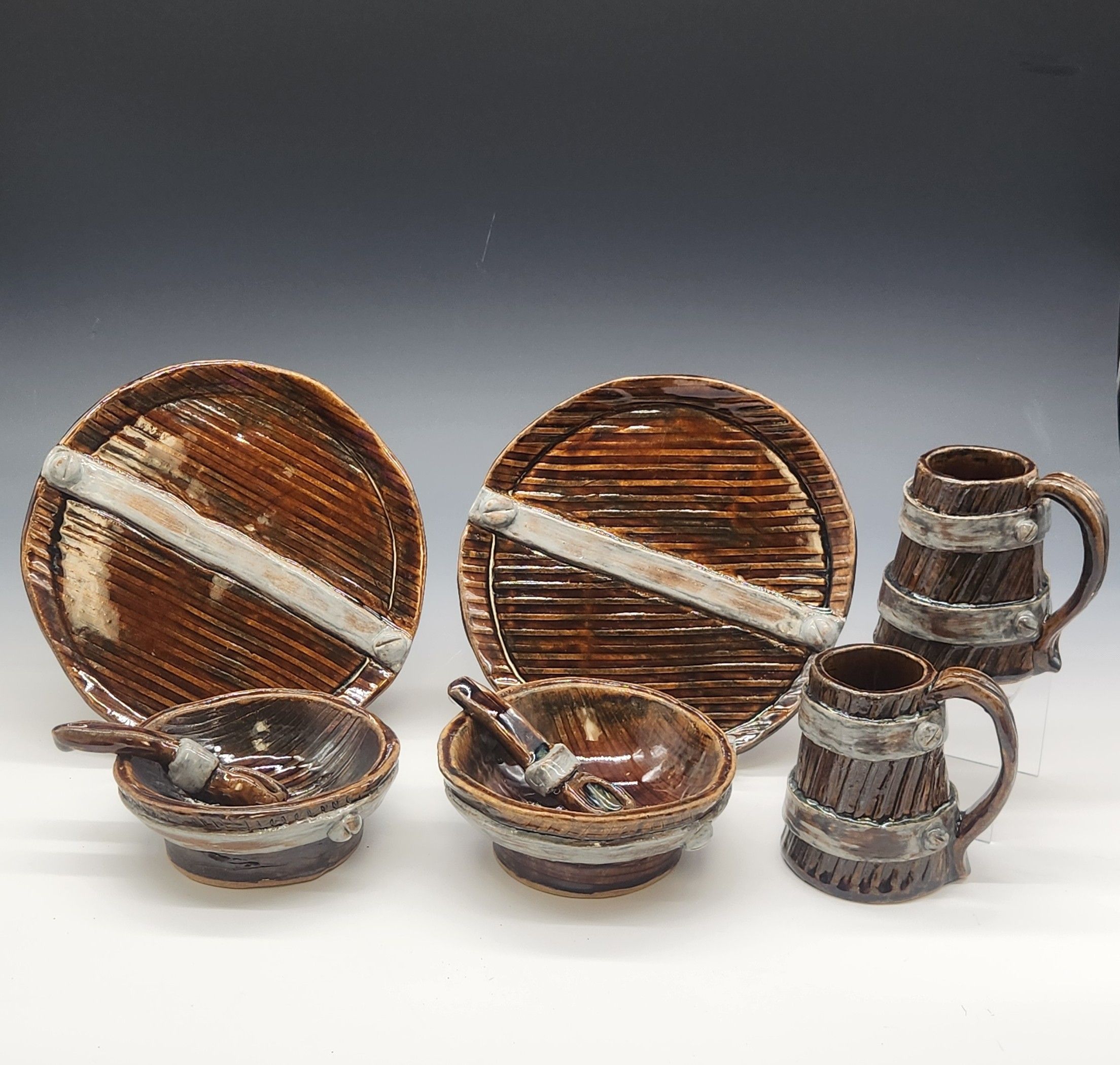
Textured Slab Sets with a Focal Accent (Ceramics II)
This project introduces kids to the concept of building with textured slabs and designing and creating a set of pieces that are unified by textures and focal accents throughout the set. Students will expand their already small but existing knowledge of working with slabs to include a plethora of options of forms and construction techniques.
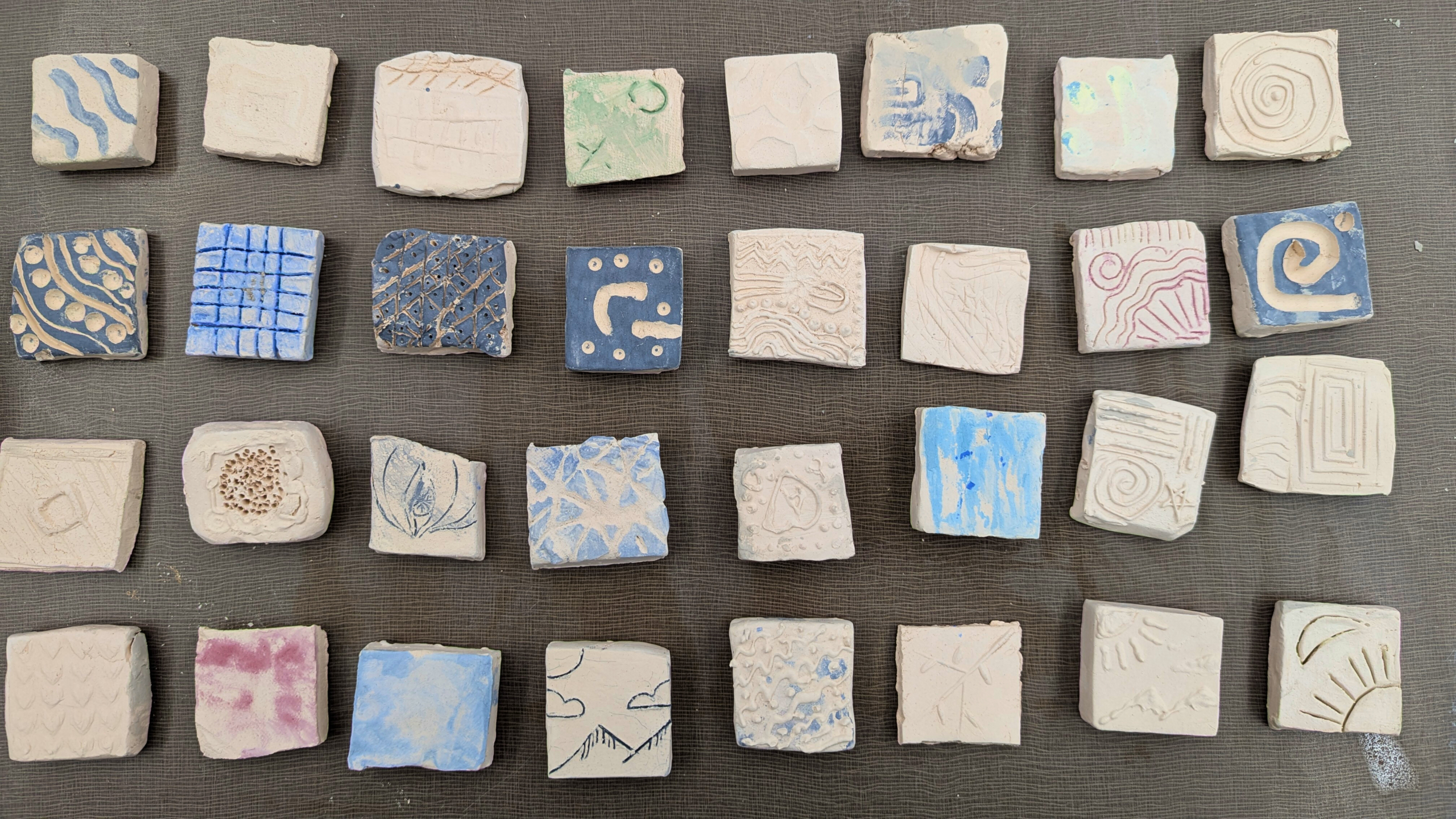
Advanced Surface Design
For my advanced students: How do we get students to push their skills and techniques to the next level? Explore and experiment with advanced surface design skills.

Eyeball Pinch Pot
The Eyeball Pinch Pot Project is my absolute go-to for beginner students. This project includes shaping, sculpting, attaching, and leaves room for creativity for overachievers. I use this project to embed critical knowledge in beginners so that they can go on to create bigger and better pieces!
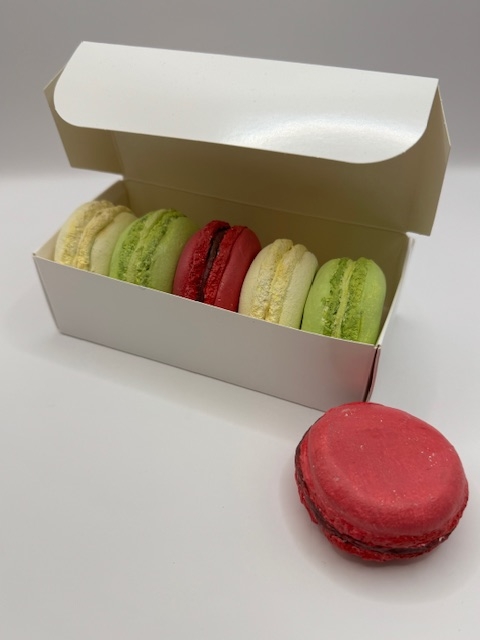
Is it Clay?
Plan and design a hyper-realistic clay sculpture that convincingly mimics an object from everyday life.
Use hand-building techniques (e.g., coil building, slab construction, carving, applied texture) to achieve realistic forms and textures. Apply appropriate surface treatments to create convincing details.
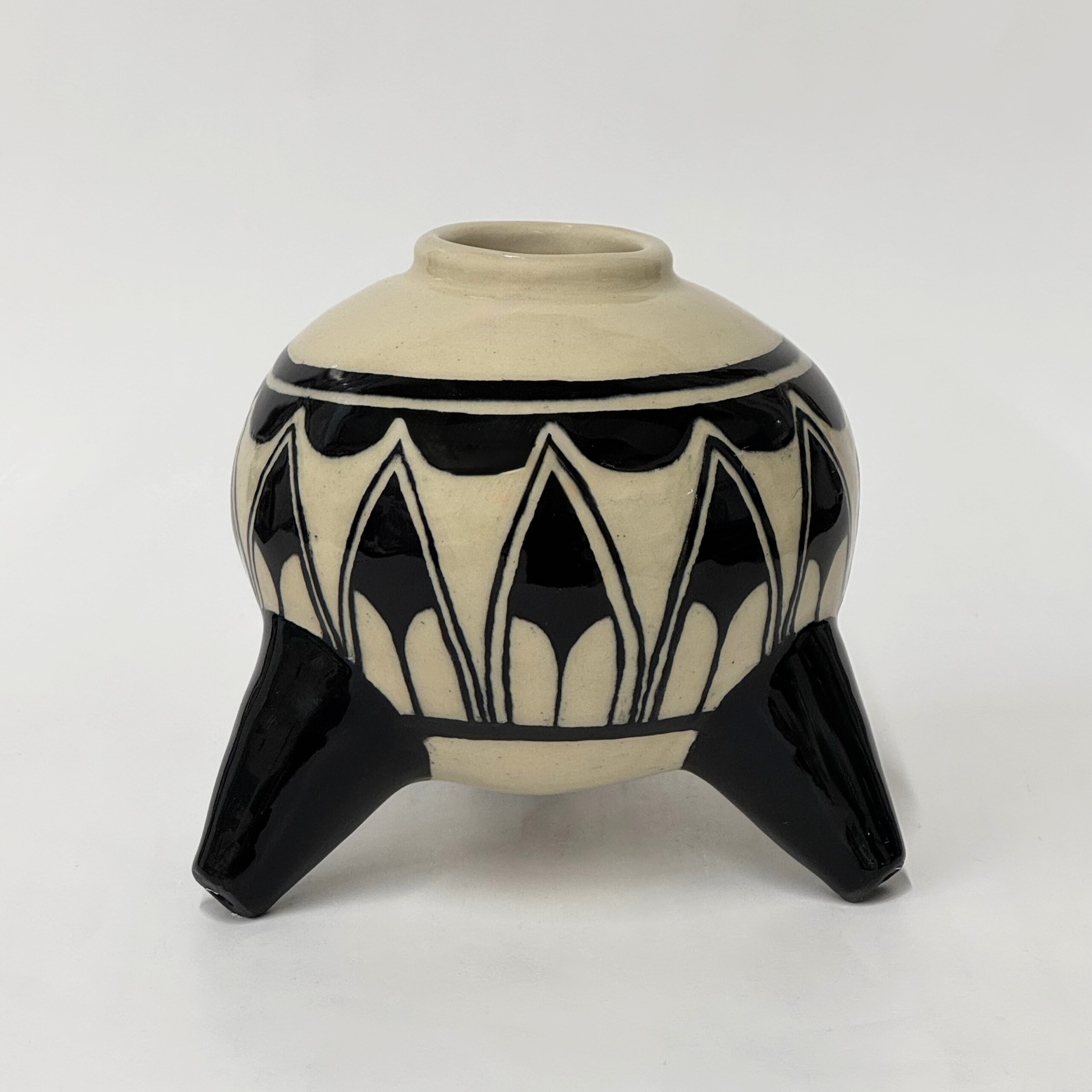
Sgraffito Vessels
Students can create a ceramic vessel using any method of construction and then finish the surface to illustrate a design using the sgraffito technique.
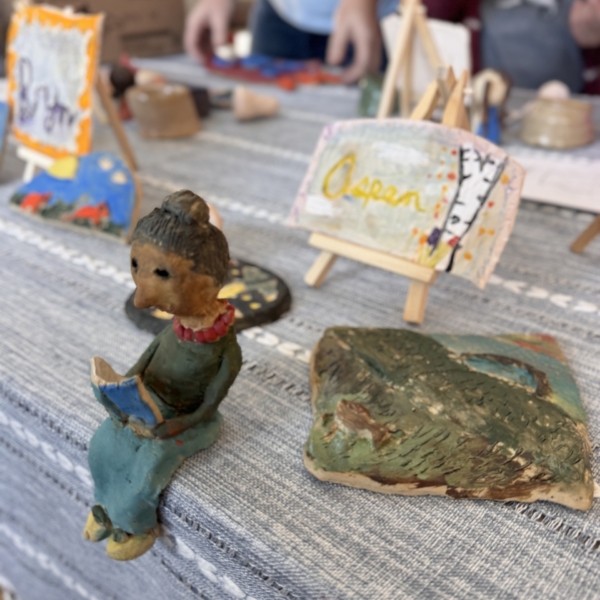
Clay Boy
This project brings in literature with a story called Clay Boy by Mirra Ginsburg. After reading the story, students are inspired to make their own small clay person using pinch pot and sculpting techniques.
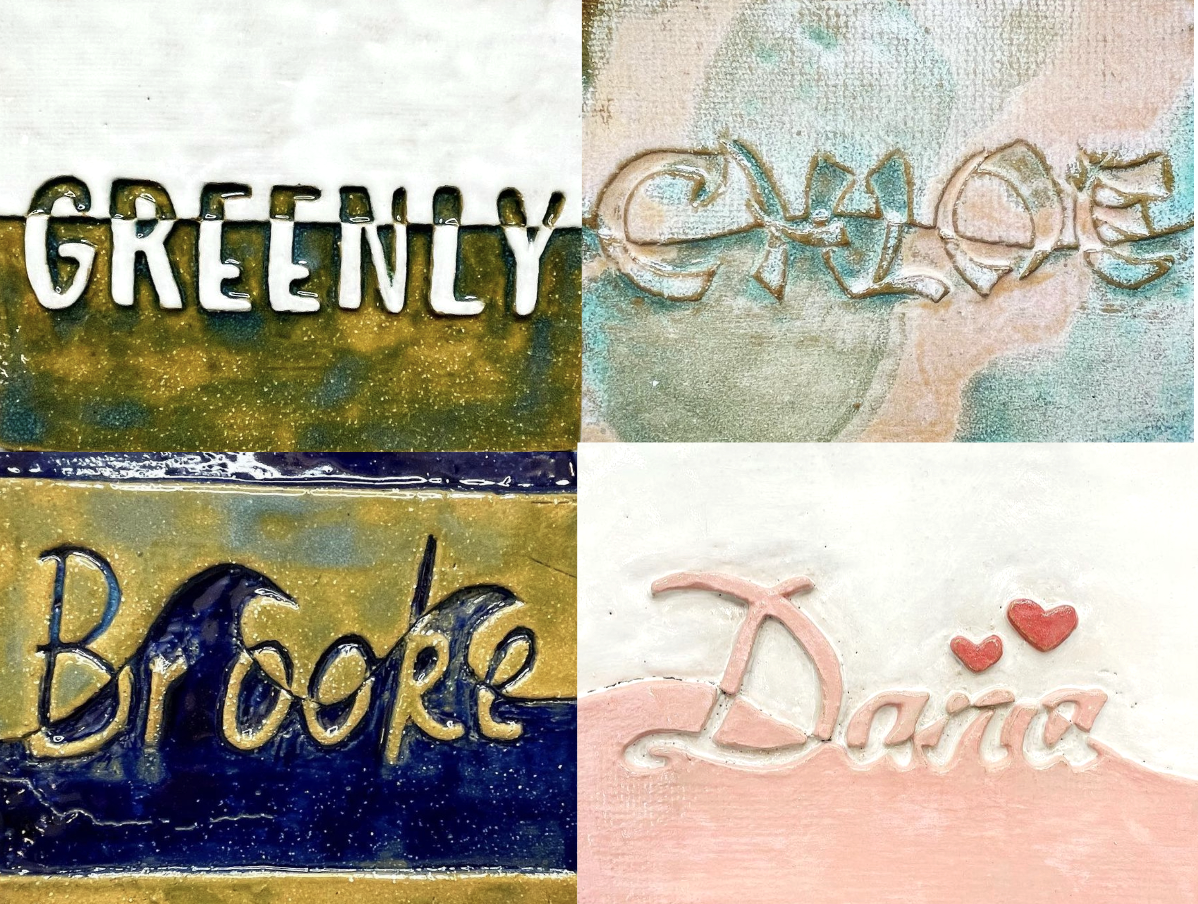
Personalized Name Tags
Students will create unique and personalized name tag using a 7” x 9” slab, transfer their name in a chosen font, divide it in half, and showcase contrast using high relief on one side and sunken relief on the other.

Storybook Puppets
This lesson integrates language arts, visual arts, and drama combined together in the form of a puppet. Students will create a puppet based off a favorite book character of theirs. Once the puppet is complete, the class will watch a puppet show of their peers puppets being interviewed about who they are and what book they are from.

STEAM -Form to Function: The Art and Use of Ceramics
Students will explore the five stages of clay–greenware, leather hard, bone dry, bisque, and glazeware–by measuring and recording changes in weight and appearance. Through STEAM integration, they will use technology to document observations, apply engineering skills to create functional ceramic objects, and compare art with utility.
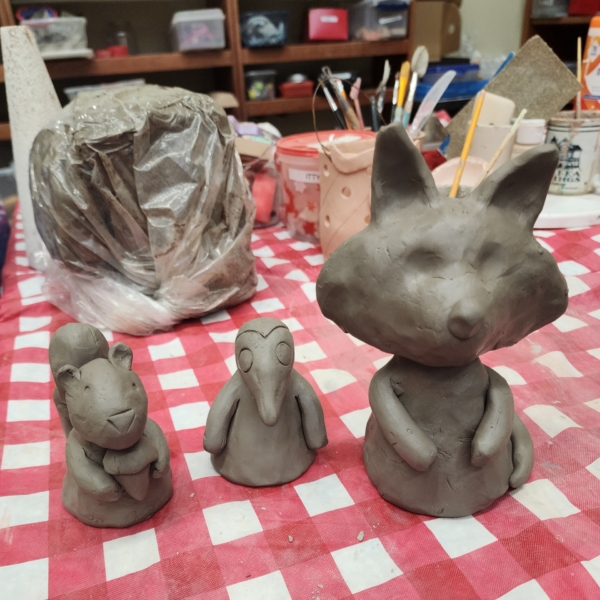
Animals
Students use pinch, slab, modeling, and combination handbuilding techniques to create animals with character. Students are encouraged to brainstorm a story about their animal, to help them decide what characteristics they want to embody in their piece.
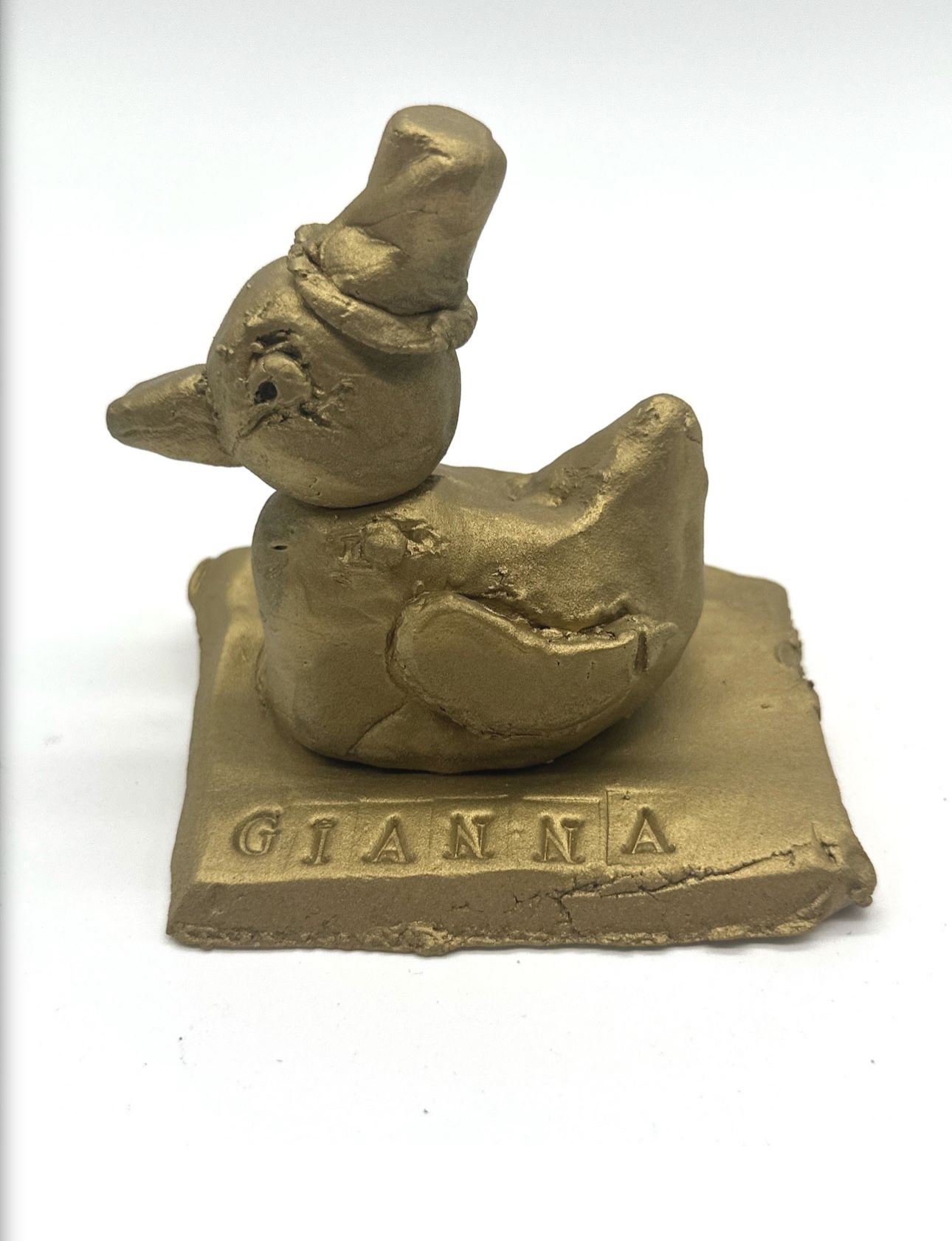
Ceramic Game Pieces
Students learn about the history of board game player tokens, and build upon this inspiration to design their own ceramic game piece. This project allows for students to utilize coil, slab, and other ceramic hand-building techniques. Students also exercise choice through their game piece design.
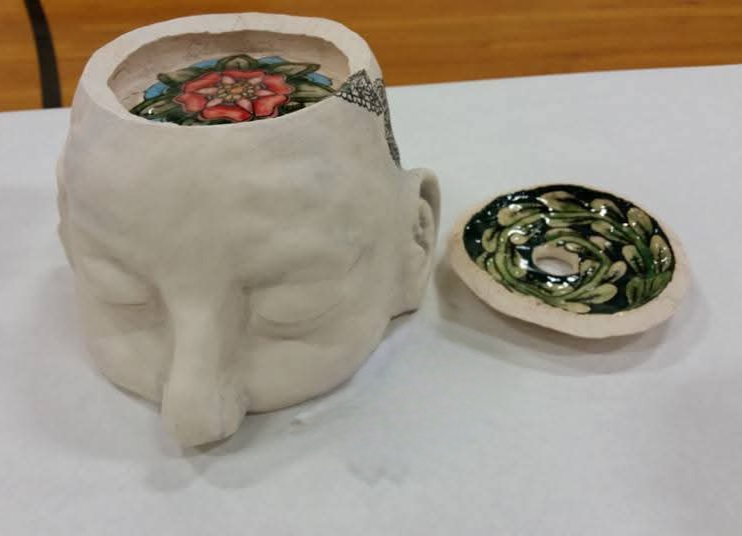
Environment Within
Environment Within is a project where students create a subject matter of their choice, and within that sculpture, they need to create a space of mystery or intrigue, something that will make the viewer want to look within, or at the piece for a more extended period of time.
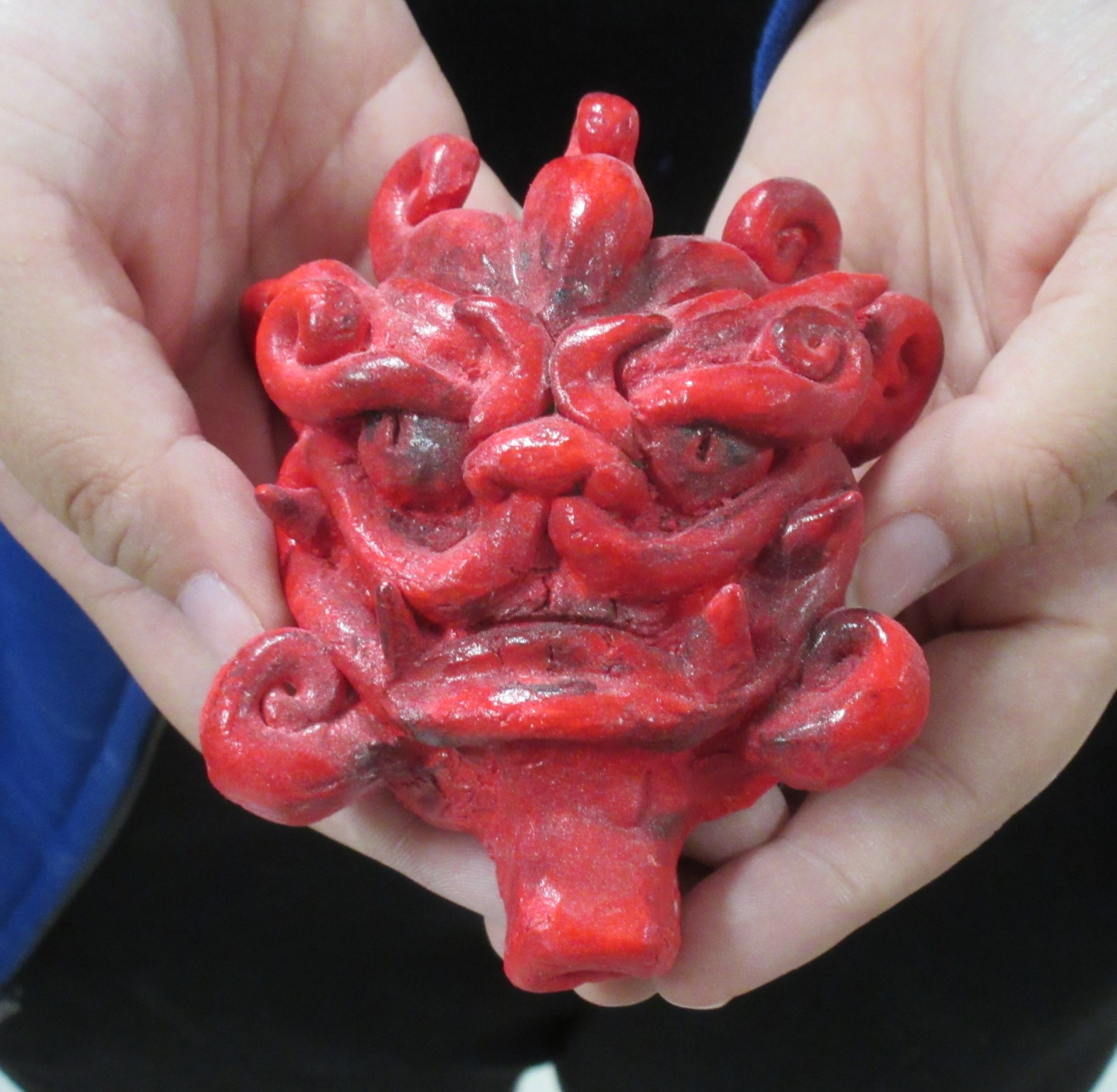
Clay Whistle
Create a functional whistle out of clay using simple tools like popsicle sticks! This hands-on project explores shaping, carving, and airflow mechanics to produce sound. Perfect for all skill levels, it’s a fun way to blend creativity with basic physics.
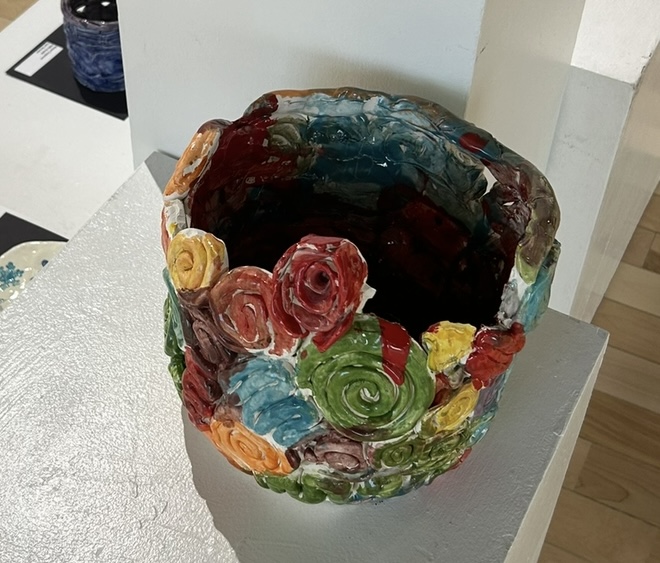
Crazy Coil Pot
The Coil Pot Experimentation Challenge is designed to provide students with a dynamic and engaging experience in ceramic art, fostering creativity, collaboration, and technical skill development. This challenge aligns with the principles of experiential learning, allowing students to explore the versatile medium of clay.
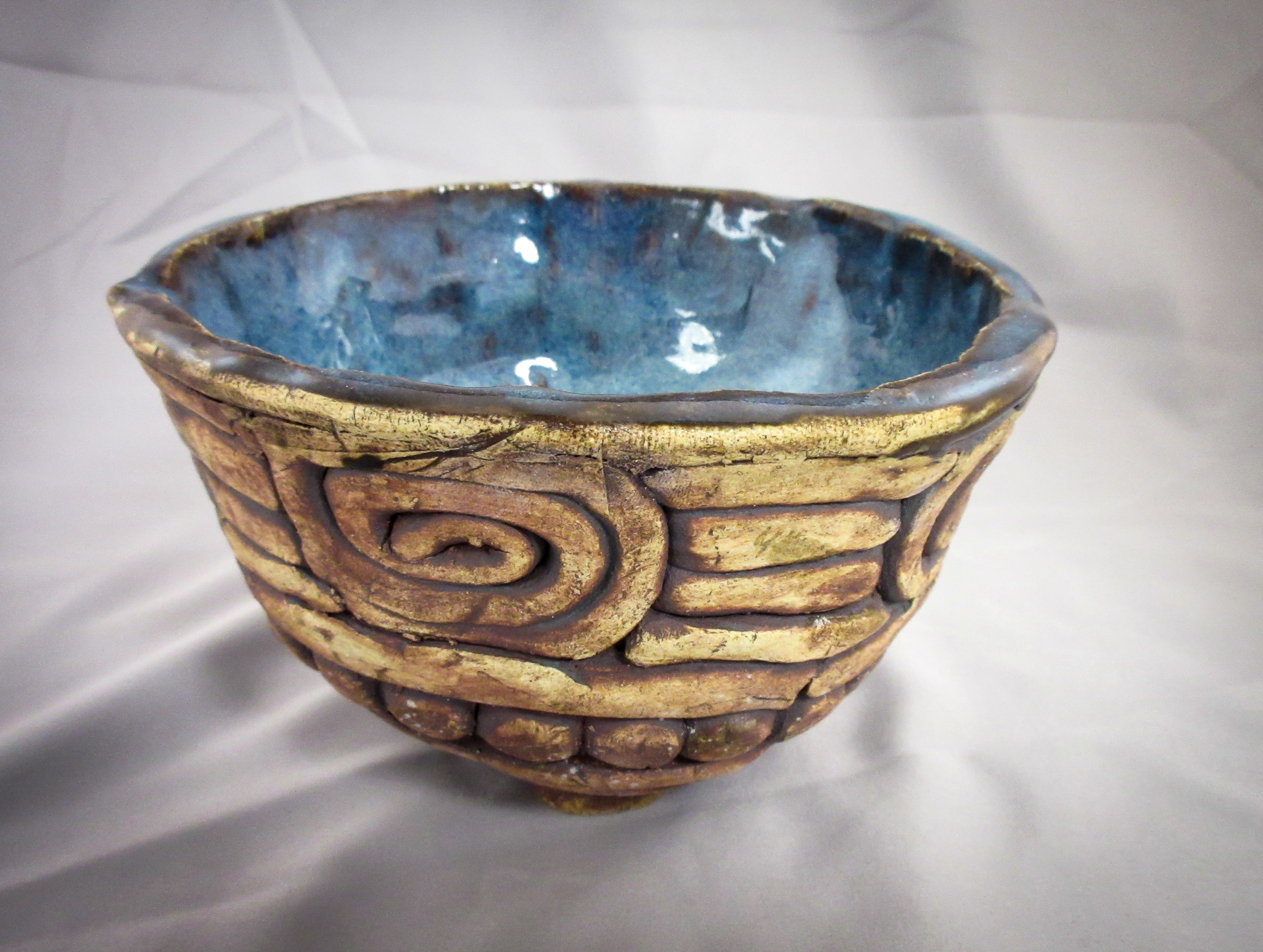
Texture coil bowl
Create a unique bowl using the coil method, where texture and design take center stage. The exterior showcases a decorative coil pattern, while the inside remains smooth for a functional finish. This project blends creativity with traditional hand-building techniques for a one-of-a-kind piece.

Slab Mug
Ever wanted to make a functional mug without using the wheel? With the slab method, you can hand-build a unique and personalized mug from clay. This technique allows for endless creative possibilities while making a sturdy, usable piece of pottery.
Sign up for Kids Need Clay email
Get fresh ceramics teaching resources delivered monthly.


